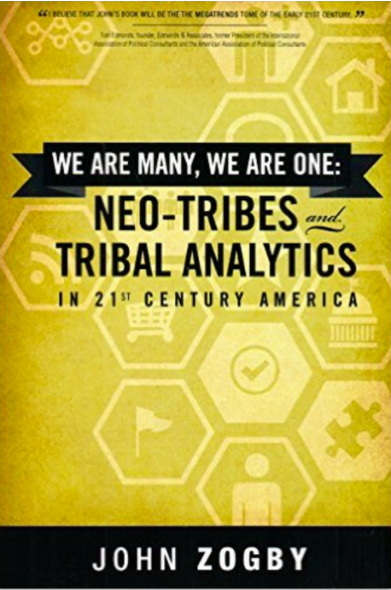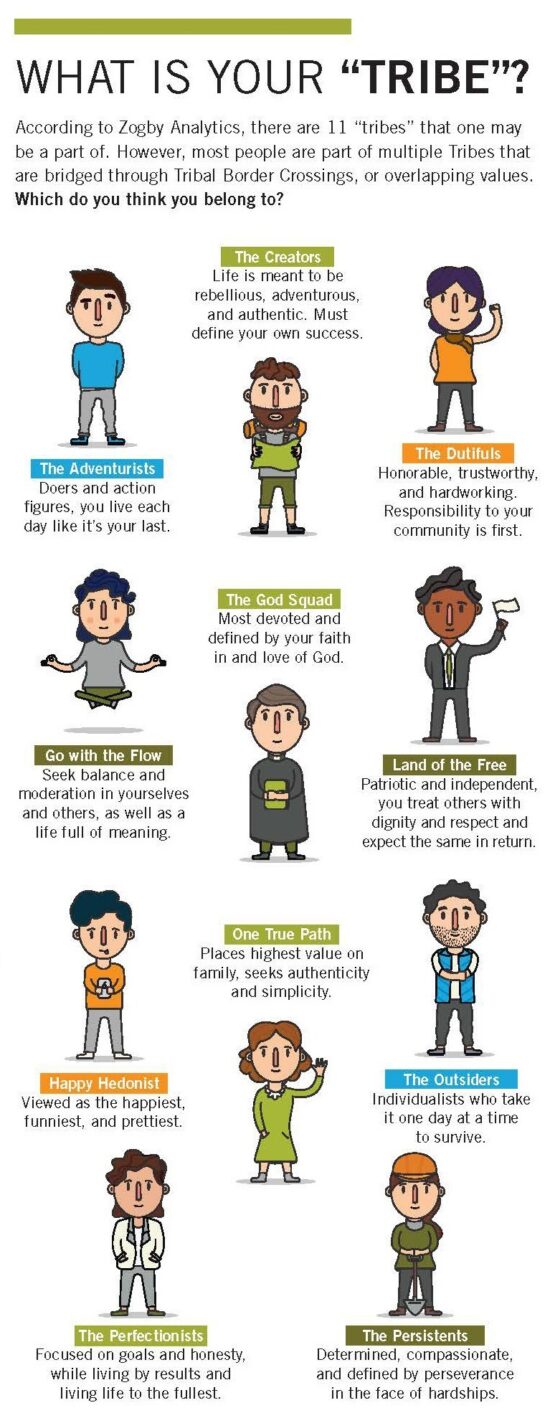Jeremy Zogby is a partner at John Zogby Strategies, LLC, a U.S.-based data analytics and strategic consulting firm. Global Ties U.S. sat down with Zogby for a discussion of the firm’s latest research project, We Are Many, We Are One: Neo-Tribes and Tribal Analytics in 21st Century America.
 In the discussion, Zogby outlines how we can use Tribal Analytics to advance our work in citizen diplomacy and exchanges and build relationships with International Visitors.
In the discussion, Zogby outlines how we can use Tribal Analytics to advance our work in citizen diplomacy and exchanges and build relationships with International Visitors.
Global Ties U.S. staff recently had the opportunity to participate in a workshop hosted by Zogby to learn more about our core values and ways to use them for more effective communication amongst the team as well as with the larger Global Ties Network. (Note: the Zogby family are longtime friends and supporters of the Global Ties Network.)
This interview has been edited for length and clarity.
Your book states that America is no longer divided along demographic lines such as race, religion, or ethnicity, but rather, has grouped itself based on value attributes, or what you call “tribes.” Can you elaborate?
If one is to turn on the TV or read the news, we’re bombarded with frequent stories about how we’re divided politically, racially, in terms of gender, and more. Unfortunately, these stories are true, but do they really capture what Americans experience in their daily lives? Is division continuously at play for 300+ million Americans? When we came up with this idea to ask the public how they would group themselves based on universal themes (i.e. life philosophy, defining moments in life, brands that speak to you, etc.), we found a very different picture. In fact, the “tribes” were all values based. To sum it up: all “tribes” have every age group, race, and political party.
What can Tribal Analytics teach us about ourselves, and how we both interact with and are perceived by others?
In today’s world, things are changing so fast. What does it mean to be a 30-something white male from Minnesota? Or a 20-something black female from Alabama? Decades ago, these labels had some predictability to them because life was more static. In today’s dynamic world, this has all changed.
Tribal Analytics teaches us more about what we and others value and how there is so much overlap between groups that we tend to think are so different from us. It also teaches us that certain “tribes” on the surface appear to be opposing.
Take for example the Happy Hedonists and the God Squad: When we drill deeper down, we find that both are concerned about a very powerful issue today–they just have different ways of expressing it. Happy Hedonists say “global warming” while God Squad call it “human stewardship of the Earth.” But, if we remove our biases, we can hear they are talking about the same thing!
In the book, we refer to this phenomenon as Tribal Border Crossings. We can learn how to build bridges and find common ground with people who generally represent different values. That is why we say in the book, “We are many, but we are really one.”

Text Credit: John Zogby Strategies, LLC / Designer Credit: Funktionell
Your research identified 11 main “tribes.” How can we use that information to advance our work in citizen diplomacy and exchanges?
A great team building exercise for when Global Ties brings in people through various exchange programs would be to have participants discover their “tribe” (all of which are universal interests, values, and aspirations), and place them in diverse groups to find consensus on forging a larger “tribe”. The activity is an exercise in diversity, diplomacy, and empathy itself.
I had the pleasure of conducting a workshop with your team and learned that your DC office has the following “tribes”: Adventurists, Self-Perfectionists, Happy Hedonists, Dutifuls, One True Path, and a couple others. But, what about organizations you work with that have members of the God Squad or Land of the Free? Do people affiliated with Global Ties in Massachusetts understand people in Arizona, and vice versa?
Do you have any tips on how we can build relationships with those with whom we don’t have a natural affinity?
As a former teacher, I utilized debate and discussion frequently. I contemplated ways to get a one up on others until one day, it dawned on me that when you corner somebody in a debate and you think you have them–they just double down. Deep down inside, we all know that you can’t change anyone, and if change is to take place, it does so almost at a glacial pace.
What if we were to take an entirely different approach with people who represent different ideas and ideals? Similar to what we did with tribes: ask and listen. Try to understand your perceived opposition. Why do they believe in what they do? How did they come to the conclusions they came to? I’m not saying it’s easy, because it’s not. But when one uses empathy to walk a day in the shoes of another person—especially one that frustrates them—you come away with an entirely different perspective and approach. Now you are in a much better position to build a relationship with those who don’t share your affinities.
With this new approach, if I debate somebody and I get them to understand where I’m coming from, I feel that is a great win for both of us as opposed to one winner and one loser.
Why is this book essential reading for our Network?
Tribal Analytics is a revolutionary concept. The “tribes” and the shared interests, values, and aspirations they hold dear to them are directly from the public. The experts in data allowed the public to narrate the data themselves. If one wants to get a mosaic of our cultural landscape, this is the book because it is in their own words. Don’t be afraid to hear from the Tribes you may disagree with. You might just find there is some overlap somewhere.
What surprised you the most during your research for this book?
The extent of Tribal Border Crossings. We had an idea just from working with so much data that somewhere there would be overlap, but to the extent it does, we had to dedicate an entire chapter to this concept!
